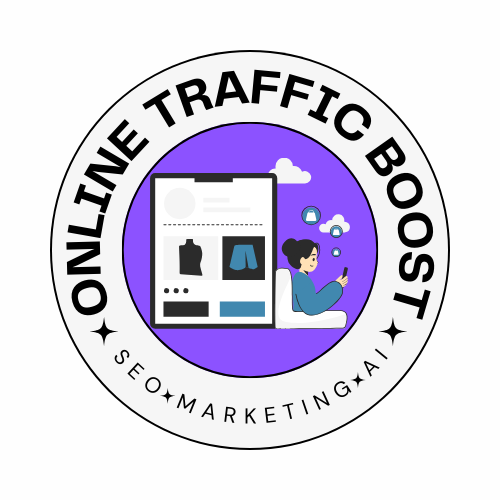Boosting E-Commerce Conversions with Email
Every click is important in the modern, fast-paced digital world, where online shopping is experiencing explosive growth. It is not enough for internet businesses to simply attract visitors; the ultimate objective is to turn those visitors into patrons who pay for their services.
This is where the effectiveness of marketing through email comes into play again. This article will discuss how carefully managed email marketing campaigns may greatly increase the number of customers who make purchases through an online store.
Table of Contents
Understanding E-Commerce Conversions with Email
When we talk about e-commerce conversions, we are referring to the activities that website visitors do that result in a measurable consequence. Some examples of these actions include making a purchase, signing up for a newsletter, or downloading a resource.
In order for businesses to maximize their income and profitability, it is essential for them to monitor and improve their conversion rates.
The Role of Email in E-Commerce Conversions
Among the several strategies available for increasing conversions in the e-commerce sector, email marketing continues to be one of the most effective tools. Email, in contrast to other marketing channels, enables businesses to engage directly with their audience in a tailored manner.
As a result, email is an invaluable instrument for boosting sales and cultivating relationships with customers.
Crafting Compelling Email Content
Creating content that is both captivating and resonates with the people you are trying to reach is essential to the success of an email marketing campaign. This includes subject lines that attract the reader’s attention, material that is interesting to read, and visuals or videos that are visually appealing.
Businesses have the ability to boost the possibility of conversions by providing value to customers, addressing their needs and eliminating the pain points they experience.
Personalization and Segmentation
In order to achieve success with email marketing, personalization is an essential component. Businesses have the ability to offer highly tailored content that speaks directly to the individual recipient by segmenting their email lists based on characteristics such as demographics, purchase history, and browsing behaviour. This helps to drive engagement and conversions.
Optimizing Email Timing and Frequency
When it comes to email marketing, timing is crucial. When it comes to maintaining a high level of awareness among their target audience while also preventing inbox overload, businesses need to find the optimal balance.
Businesses are able to improve their email marketing campaigns for optimal performance by conducting data analysis and testing a variety of send timings and frequencies based on the results.

Implementing Calls to Action (CTAs)
In order to drive conversions through email marketing, it is vital to have calls to action that are both clear and appealing.
Whether it’s to encourage recipients to make a purchase, sign up for a webinar, or download a free trial, calls to action (CTAs) should be shown clearly and tailored to inspire action.
Utilizing Automated Workflows
Email automation enables businesses to streamline their marketing efforts and provide timely and relevant communications to their audience at every point of the customer journey. This is a significant advantage for organizations.
For organizations, automated workflows may help them nurture leads and boost conversions with minimal manual effort. These processes can include everything from welcome emails to reminders for abandoned carts.
Measuring and Analyzing Email Performance
Important metrics, including as open rates, click-through rates, and conversion rates, need to be monitored and analyzed on a regular basis by organizations in order to ensure that their email marketing efforts are optimized.
Businesses have the ability to make decisions based on data in order to improve their performance over time. This is accomplished by getting insights into what is working and what is not working.
A/B Testing for Continuous Improvement
The concept of A/B testing, often known as split testing, is an effective method for enhancing email marketing efforts. Businesses may determine which variations of their email marketing approach resonate most strongly with their audience by testing a variety of aspects, including subject lines, language, and images. This allows them to continuously improve their email marketing strategy in order to achieve better results.
Integrating Email with Other Marketing Channels
There is no such thing as email marketing operating in isolation. Creating integrated, multi-channel campaigns that generate engagement and conversions across the board is something that organizations are able to accomplish by integrating email with other marketing channels such as social media, content marketing, and paid advertising.
Addressing Cart Abandonment
A significant problem that e-commerce companies face is customers abandoning their shopping carts. Fortunately, email offers a solution that is both successful and efficient for re-engaging with clients who have abandoned their abandoned carts.
Businesses have the ability to recover lost purchases and enhance their conversion rates by sending targeted follow-up emails that contain reminders or incentives.

Building Trust and Loyalty
When it comes to e-commerce, establishing trust and loyalty is absolutely necessary for long-term success. Through the delivery of great content, the provision of outstanding customer service, and the solicitation of feedback, email marketing presents businesses with a one-of-a-kind opportunity to cultivate relationships with their consumers.
When businesses continually give value and go above and beyond what customers anticipate, they have the ability to transform one-time customers into devoted brand champions.
Staying Compliant with Regulations
Compliance with legislation such as the General Data Protection Regulation (GDPR) and the Controlling the Assault of Non-Solicited Pornography and Marketing (CAN-SPAM) Act is non-negotiable when it comes to email marketing. These regulations are designed to protect personal information.
In order to avoid incurring fines and penalties, businesses have a responsibility to ensure that their email marketing operations are open and transparent, that they are permission-based, and that they are in full compliance with all applicable laws and regulations.
Conclusion
Despite the current state of the digital landscape, email marketing continues to be an effective method for increasing the number of conversions that occur in online stores.
Through the creation of appealing content, the personalization of messages, the optimization of timing and frequency, and the utilization of automation and analytics, organizations have the power to generate engagement, nurture leads, and eventually boost their revenue and profitability.
FAQs
What types of emails are most effective for driving e-commerce Conversions?
Emails such as abandoned cart reminders, personalized product recommendations, and exclusive offers tend to be highly effective for driving conversions in e-commerce.
How often should I send marketing emails to my subscribers?
The frequency of email sends depends on factors such as your audience preferences, the nature of your business, and the content you have to share. It’s essential to strike a balance between staying top-of-mind with your audience and avoiding inbox overload.
How can I measure the success of my email marketing campaigns?
Key metrics to track in email marketing include open rates, click-through rates, conversion rates, and revenue generated. By analyzing these metrics, you can gain insights into the effectiveness of your campaigns and identify areas for improvement.
What are some best practices for writing engaging email subject lines?
Engaging subject lines are concise, descriptive, and personalized. Consider using urgency, curiosity, or a benefit-driven approach to capture recipients’ attention and entice them to open your emails.
How can I ensure compliance with email marketing regulations?
To ensure compliance with regulations such as GDPR and CAN-SPAM, businesses should obtain explicit consent from subscribers before sending marketing emails, provide clear opt-out options, and include accurate sender information and physical addresses in their emails.








Pingback: Write Welcome Emails that Convert | A Simple Guide
Pingback: Email Marketing Tools In Digital Marketing
Pingback: Untold Secrets of AI Influencer Monetization